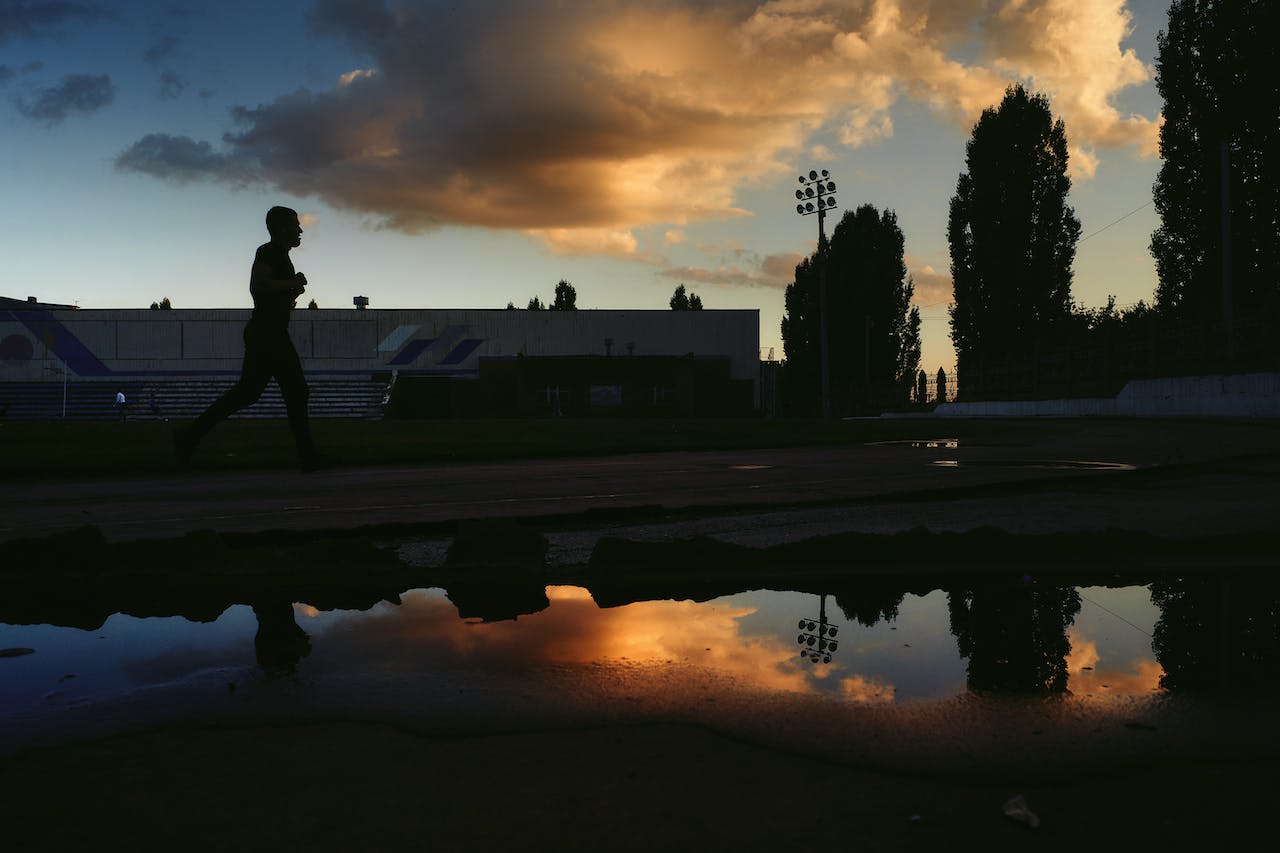For many runners, getting in a few miles after work is more convenient than waking up at dawn. And as fall and winter approach, daylight hours become more limited, making evening or night running a necessity. But pounding the pavement once the sun goes down requires some special considerations. Follow these tips for keeping night runs safe, comfortable, and rewarding.
Gear Up for Visibility
Being visible to drivers and pedestrians should be your top priority when running in darkness. Wear reflective clothing or vests so headlights and streetlamps illuminate you. Choose light colors contrasting with evening hues—bright yellows, whites, greens, oranges stand out nicely. Add reflective tape or patches to your clothing, too. Equip yourself with plenty of LED lights—at least one flashing red light attached to your back and others along your front, sides, and wrists. A reflective headlamp lets you see the path ahead clearly. Don’t just trust your phone flashlight. Go overboard with the lights so you glow like a Christmas tree!
Accessorize for Comfort
When you’re no longer working up a sweat, warmth becomes a factor. Arm warmers, long-sleeved shirts, tights, gloves, ear warmers, and other cooling weather gear will keep you comfortable mile after mile. Pack layers you can tie around your waist or wrists as you heat up. Choosing the right socks, sports bras, and shoes is especially important to prevent discomfort and blisters during a long nighttime run. Make sure your trainers have enough cushioning and support when fatigue sets in.
Pick Proper Paths
Stick to well-lit routes with sidewalks when possible. Parks and wooded trails may be peaceful during the day but need more visibility after dark. Run on the left side of roads facing traffic so you’re visible. Avoid crossing dark parking lots or alleys. If running rural roads, make sure there is a wide shoulder. Be extra cautious at intersections. Only cross when you have a walk signal. Stay alert for emerging vehicles. Consider doing shorter loop courses near home versus out-and-backs to avoid tiring on the return leg along dark stretches. Use apps like Footpath and Road Run Project to find ideal running paths.
Alter Your Schedule
Adjust your run times according to lighting. After sunset, residual ambient light still makes runs more visible and comfortable versus 11 pm darkness. During bright moon phases, schedule runs to utilize lunar illumination. When the sun sets earlier in winter, plan your latest safe start time and work backwards to ensure you finish with daylight. You may need to switch some weekday runs to weekends when you can sleep in and run mornings.
Always Stay Alert
While zoning out to music or podcasts is fine during day runs, remain alert at night. Keep the entertainment volume low and consider using only one earbud so you remain aware of your surroundings. Stay off the phone except for emergency calls. Keep your eyes and ears open to activity around you. Don’t assume drivers see you—make eye contact so you’re sure. When you spot potential hazards like potholes or large sticks, point them out to others on the path, too.
Conclusion
Staying safe doesn’t mean you have to give up your evening mileage. With preparation and wise precautions, night runs can become an exciting yet low-risk part of your training. The roads will be yours, and the extra dedication pays off at your next daybreak race. Just illuminate yourself, pick proper paths, stay alert, and enjoy those peaceful miles.

